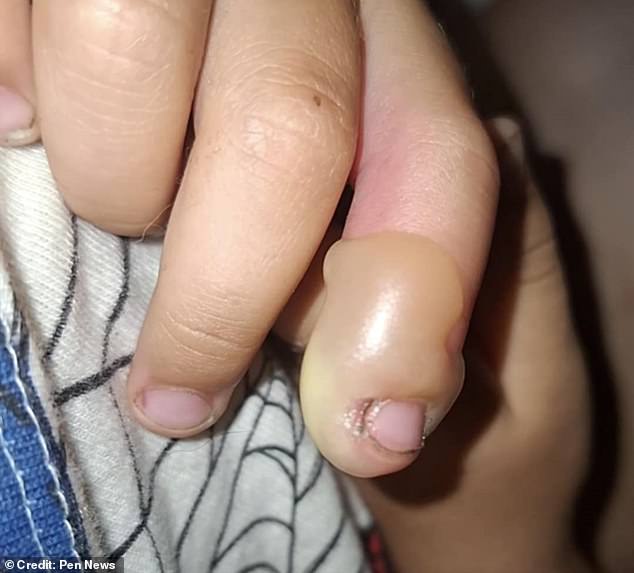
Toddler Suffers Plum-Sized Blister After Encounter With Britain’s Toxic Giant Hogweed in Newcastle
Toddler Suffers Severe Burns from Toxic Giant Hogweed
[Image: Brooklyn’s blister, swollen and pus-filled, with caption: A blister "the size of a plum" left by giant hogweed sap.]
Three-year-old Brooklyn Bone sustained second-degree burns and a agonizing blister after briefly touching giant hogweed, dubbed “Britain’s most dangerous plant,” while picking flowers in Newcastle. His mother, Heather Irving, believes the incident occurred during a walk to daycare.
“He was exposed for just minutes,” said Irving. The following day, a small blister formed on Brooklyn’s finger. By night, it “blew up,” quadrupling in size. “He was crying, shaking, and couldn’t tolerate anything touching it,” she added. The blister stretched halfway to his knuckle, becoming pus-filled and “the size of a plum.”
[Image: Giant hogweed plant, towering with white flowers, captioned: Giant hogweed’s toxic sap causes severe burns when exposed to sunlight.]
At South Tyneside Hospital, medics identified giant hogweed as the culprit. The invasive plant, introduced to the UK in 1817 as ornamentation, contains sap that inhibits skin’s UV protection, leading to horrific burns. Contact often goes unnoticed initially, allowing prolonged sun exposure to worsen injuries.
Brooklyn underwent emergency treatment, including draining the blister and specialized burn care. He faces weeks of recovery and lifelong sun sensitivity on the affected finger. “He’ll need factor 50 sunscreen there forever,” Irving explained.
[Image: Brooklyn at the hospital, caption: The toddler received treatment for second-degree burns.]
Why Is Giant Hogweed Dangerous?
- Toxic Sap: Causes photosensitivity, leading to burns, blisters, and scarring.
- Delayed Reaction: Victims may not feel immediate pain, risking further UV exposure.
- Long-Term Effects: Burns can result in years of skin sensitivity or blindness if sap enters eyes.
Heather warned parents: “Avoid unknown plants—even harmless-looking ones. We’re lucky it was just one finger.” Glasgow resident George Parsonage, burned in the 1960s, still experiences discomfort, highlighting the plant’s lasting impact.
Background: Native to the Caucasus, giant hogweed’s spread in the UK is uncontrolled. Each plant produces 50,000 seeds, thriving near waterways. Experts like Mike Duddy of Mersey Basin Rivers Trust label it “Britain’s most dangerous plant.”
[Image: Close-up of hogweed sap on skin, caption: The sap’s toxins activate in sunlight, causing severe burns.]
Brooklyn’s ordeal underscores the plant’s hidden threat. Authorities urge reporting sightings to local councils for safe removal. As summer peaks, vigilance is crucial to prevent similar incidents.
Key Takeaways:
- Teach children to avoid unknown plants.
- If exposed, wash skin immediately and avoid sunlight.
- Seek urgent medical care if blisters form.
“His skin peeled to prevent infection,” Irving recounted. “It was horrific.” Her warning echoes across communities: this botanical menace lurks in plain sight.
[Image: Infographic on giant hogweed identification, captioned: Recognize giant hogweed: thick stems, white flowers, and serrated leaves.]
Stay informed, stay safe—this invasive species shows no mercy, even in fleeting encounters.


